Birds come in every colour, from electric blues to verdant greens and deep reds. There are thousands of species of yellow birds across the world, and the UK is home to around 14 species that are predominantly yellow.
The UK’s yellow birds range from the tiny, rare Cirl bunting to the regal Golden pheasant and many others besides. You’ll probably spot some of these birds in back gardens and local parks, whereas others are rare sightings that you’d be lucky to see.
This is a guide to all the yellow birds you’re likely to see in the UK!
Predominantly yellow birds
The birds below are have a mostly yellow plumage.
Yellowhammer
Emberiza citrinella
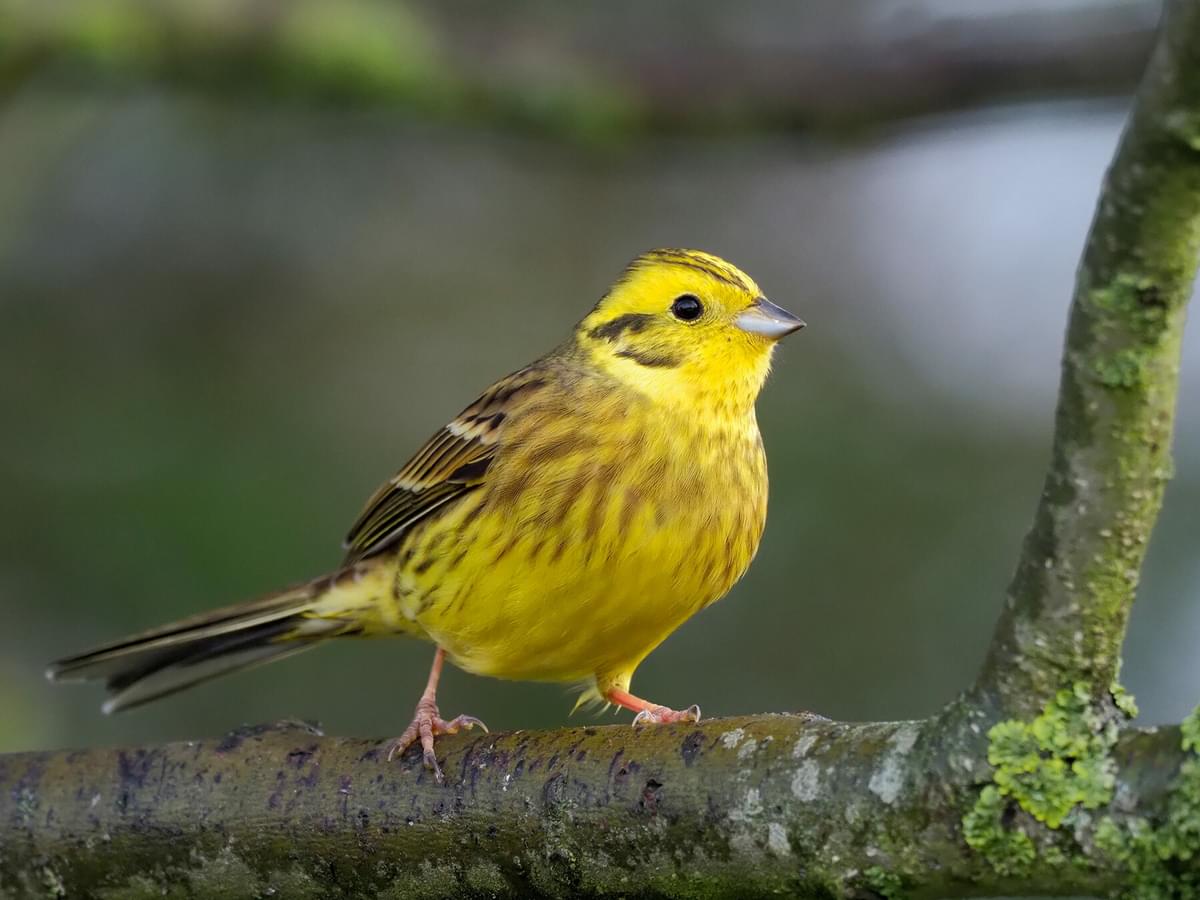
Length
15.5-17cm
Wingspan
23-29.5cm
Weight
20-36g
Yellowhammer
The Yellowhammer is a strikingly yellow bird from the bunting family, which contains 45 other species. Their bright yellow heads and streaky yellow body makes them pretty easy to spot.
Yellowhammers are widespread throughout their Eurasian range, spreading from the UK and Ireland to central Russia, Mongolia and the Middle East. Yellowhammers often perch on hedgerows and small trees and have a melodic song that is especially prominent in the breeding season.
While common in the UK, Yellowhammers are a Red List bird due to recent population decline. For example, the Northern Irish Yellowhammer population has decreased by 65% since 1991.
They can be found in much of England, Wales, Scotland and Northern Ireland but are largely absent from upland areas. There are approximately 700,000 breeding pairs.
Appearance
A medium-small bird, though relatively large for a bunting. Yellowhammers measure 16 to 16.5cm long with a wingspan of 23 to 29.5cm.
They weigh around 25 to 36g. Both males and females are similar, but males have brighter yellow plumage and greater contrast in their colouration. Yellowhammers are yellow on their head, chest and underside, with browner wings.
Great Tit
Parus major
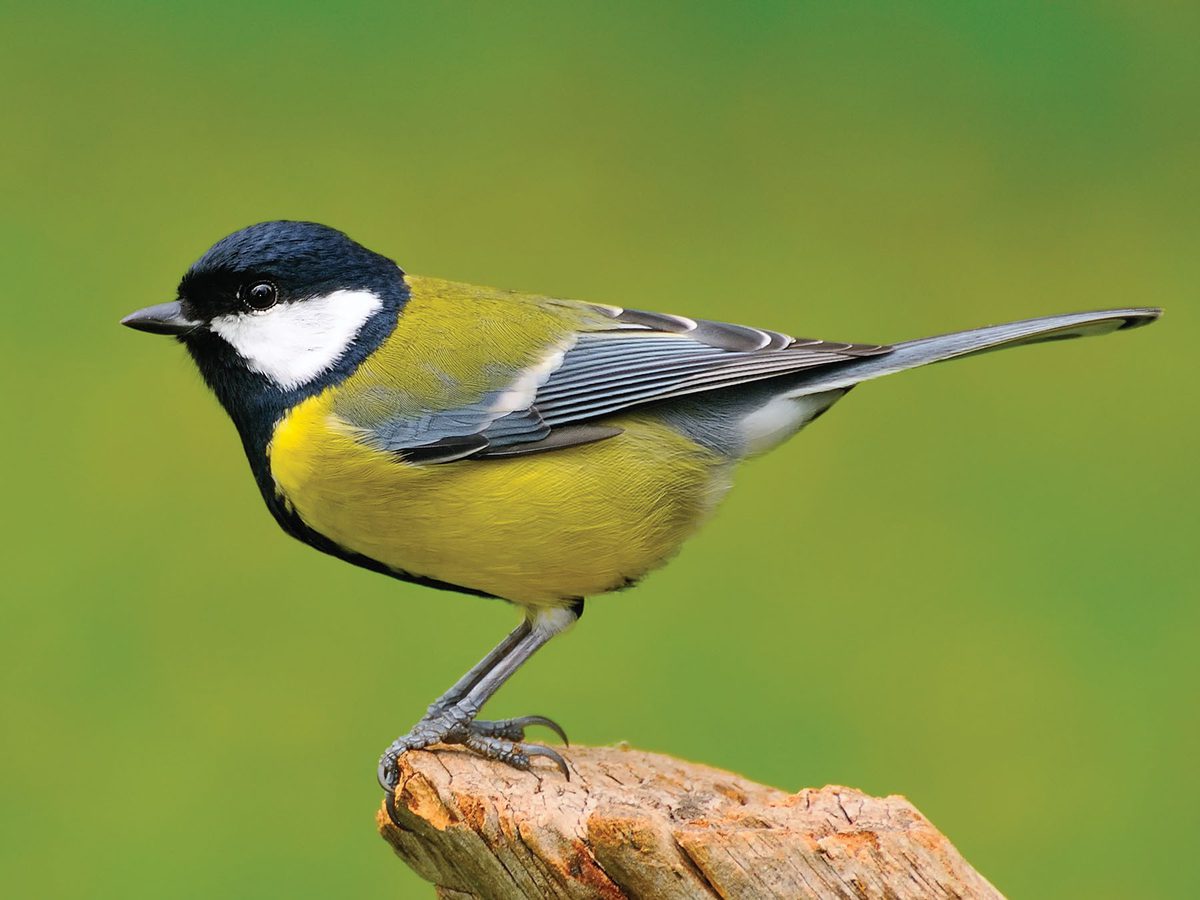
Length
14-16cm
Wingspan
24-26cm
Weight
14-22g
Great Tit
The Great tit - as the name suggests - is a large tit - the largest in the UK! This colourful bird counts as “yellow” thanks to its bright yellow breast and upper back. A sociable and brave bird, the Great tit often appears in gardens and public spaces, including in inner city areas. However, great tits are quite aggressive compared to similarly sized birds and are often seen chasing other birds from the bird table!
The Great tit is common and currently unthreatened, with over 2.5 million breeding pairs distributed throughout the UK. They’re common throughout almost the entirety of the UK and Ireland, except for the Scottish Uplands and Scottish Islands.
The global Great tit population is concentrated in Central, Northern and Western Europe.
Appearance
Great tits measure 14cm long with a wingspan of 24cm and weight around 18g. The male and female look very similar, though the female is marginally duller.
A bright and bold bird, the Great tit has a dark head with a white cheek patch, a stripe intercepting its yellow chest, a yellow back, and blue-grey wings. They’re certainly colourful and bold and are easy to spot once you’ve positively identified them a few times.
Eurasian Siskin
Spinus spinus
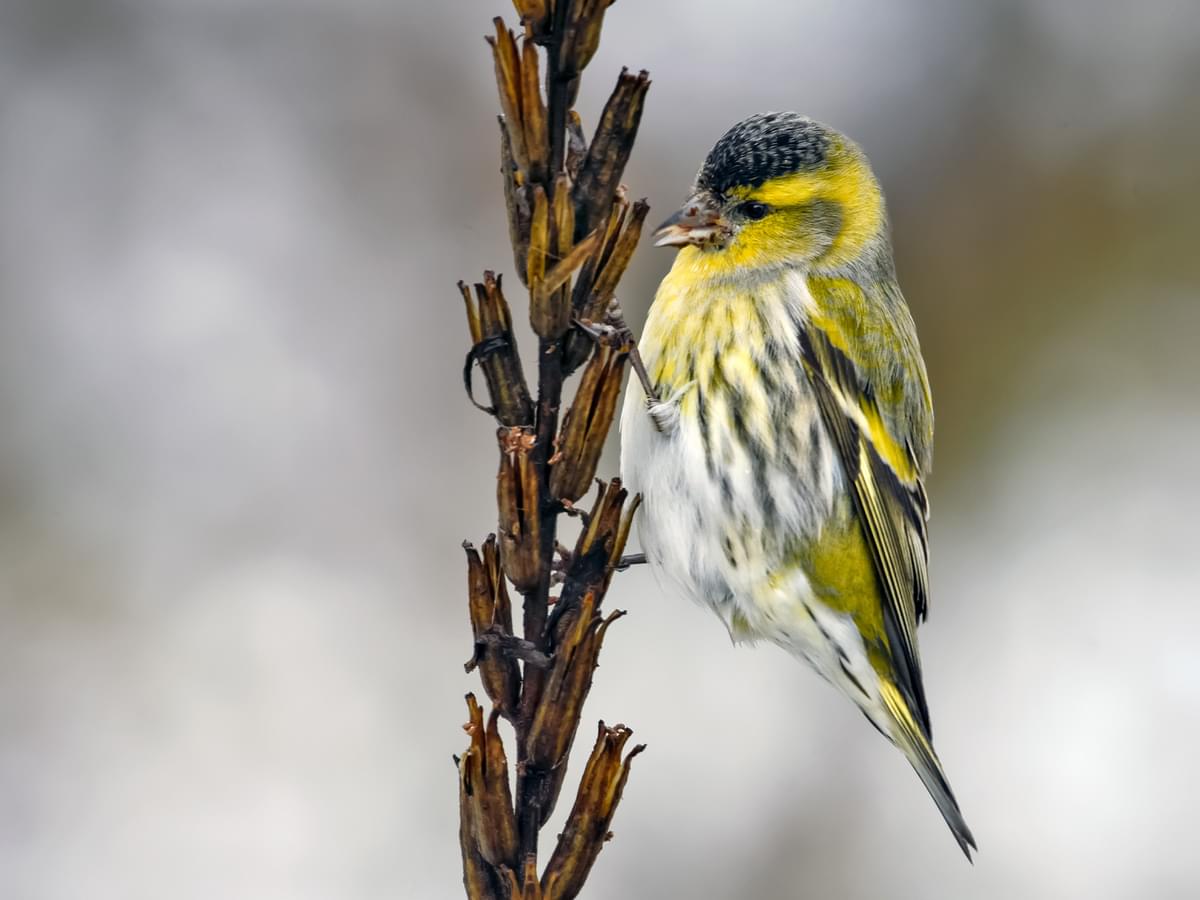
Length
11-12.5cm
Wingspan
20-23cm
Weight
10-18g
Siskin
Of the finch family, Siskins are lively birds found predominantly in Scotland or Wales, where migrants from Scandinavia bolster the UK’s winter population.
Siskins are relatively numerous, with around 400,000 breeding pairs. They prefer deep forests and woodlands and are commonly mistaken for greenfinches, though they’re much more yellow on the whole.
These sociable birds are quite brave and often maraud garden bird feeders in their social units. They’re trustworthy around humans and may feed from the hand.
Appearance
Siskins are small finches, measuring around 11 to 12.5 centimetres, with a wingspan of 20 to 23 centimetres. They weigh between 10 to 18 grams. They’re predominantly yellow of streaked yellow plumage and a yellow breast. The males are brighter than the females. They’re considerably more yellow than the greenfinch, with whom they’re often confused.
Grey Wagtail
Motacilla cinerea
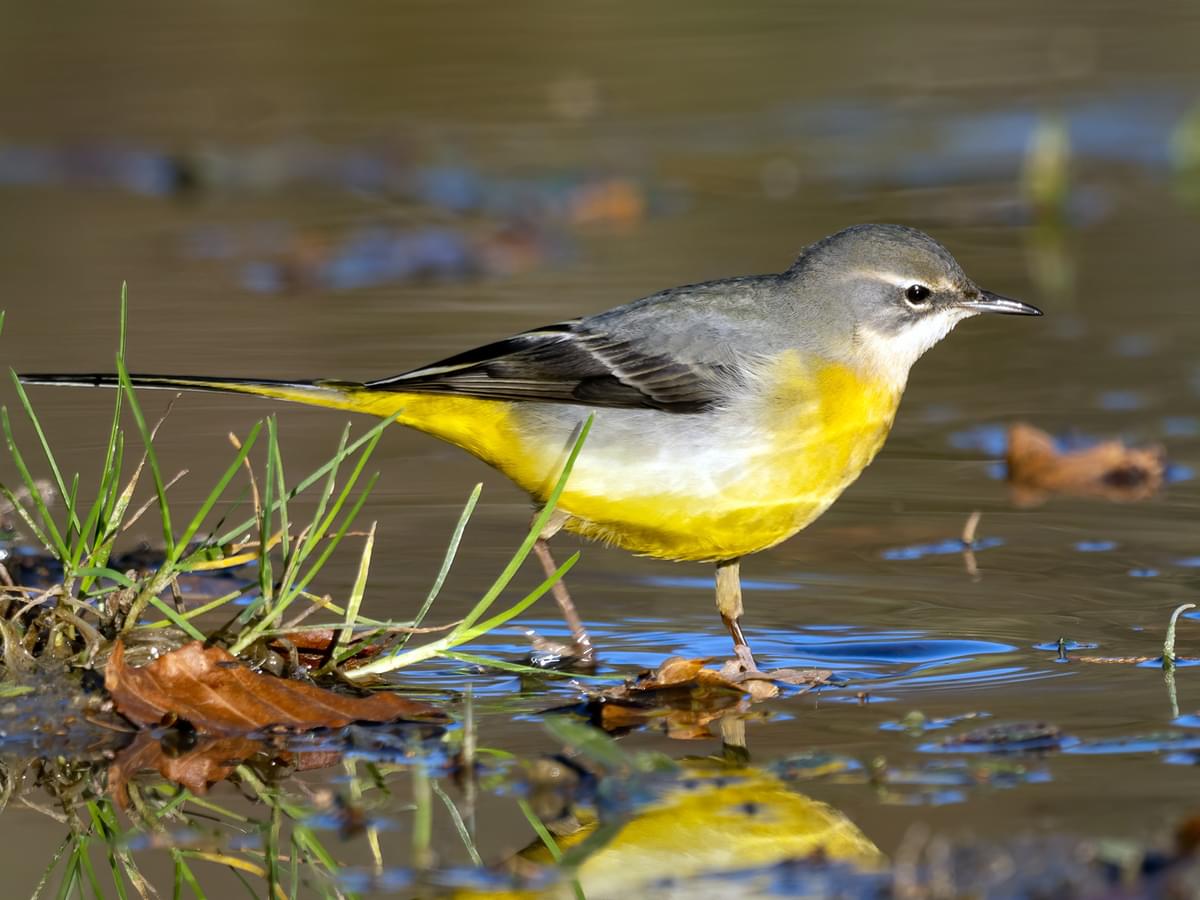
Length
17-20cm
Wingspan
25-30cm
Weight
15-25g
Grey Wagtail
The misleadingly named Grey wagtail is probably more yellow than grey! A member of the pipit and wagtail family, this slim bird of the open countryside was once much more abundant up and down the UK. The current population is around 38,000 pairs, and the bird is on the Amber List.
Wagtails earned their name by seemingly wagging their tail as they forage for insects on the ground. They’re generally migratory, but most of the UK’s populations are year-round residents. Some populations in Scotland migrate during the winter, however. You’re most likely to spot one near rivers in hilly regions of Wales, England and Scotland. They’re scarce in central England.
Appearance
The Grey wagtail measures 18 to 19cm with a wingspan of 25 to 27cm. They weigh around 14 to 22g. The male and female as similar, though the male has more defined wing tips and facial markings.
The Grey wagtail is similar to the Yellow wagtail but has a slimmer shape and a distinctive ash-grey back. They have long tails which wag when the bird forages on the ground.
Yellow Wagtail
Motacilla flava

Length
15-17cm
Wingspan
23-27cm
Weight
15-25g
Yellow Wagtail
The Yellow wagtail is less common than the Grey wagtail, and only visits the UK in the summer. In the winter, Yellow wagtails migrate across Western and Central Europe towards the Mediterranean and Africa, and you’re most likely to see one between April to October.
This reasonably rare bird is only present in eastern England, eastern Wales and southern Scotland. Yellow wagtails prefer the open countryside, especially agricultural land with grazing cattle. However, due to habitat loss and declining numbers, they’re currently on the conservation Red List. There are around 15,000 breeding pairs - less than half that of the Grey wagtail.
Appearance
The Yellow wagtail measures 17cm long with a wingspan of around 23 to 27cm. They weigh approximately 16 to 22g. Thanks to their yellow-brown back, they’re more yellow than the Grey wagtail.
The breast and underside is a lemon yellow. Like other wagtails, Yellow wagtails have long tails that tend to wag back and forth while they forage across the ground.
Cirl Bunting
Emberiza cirlus
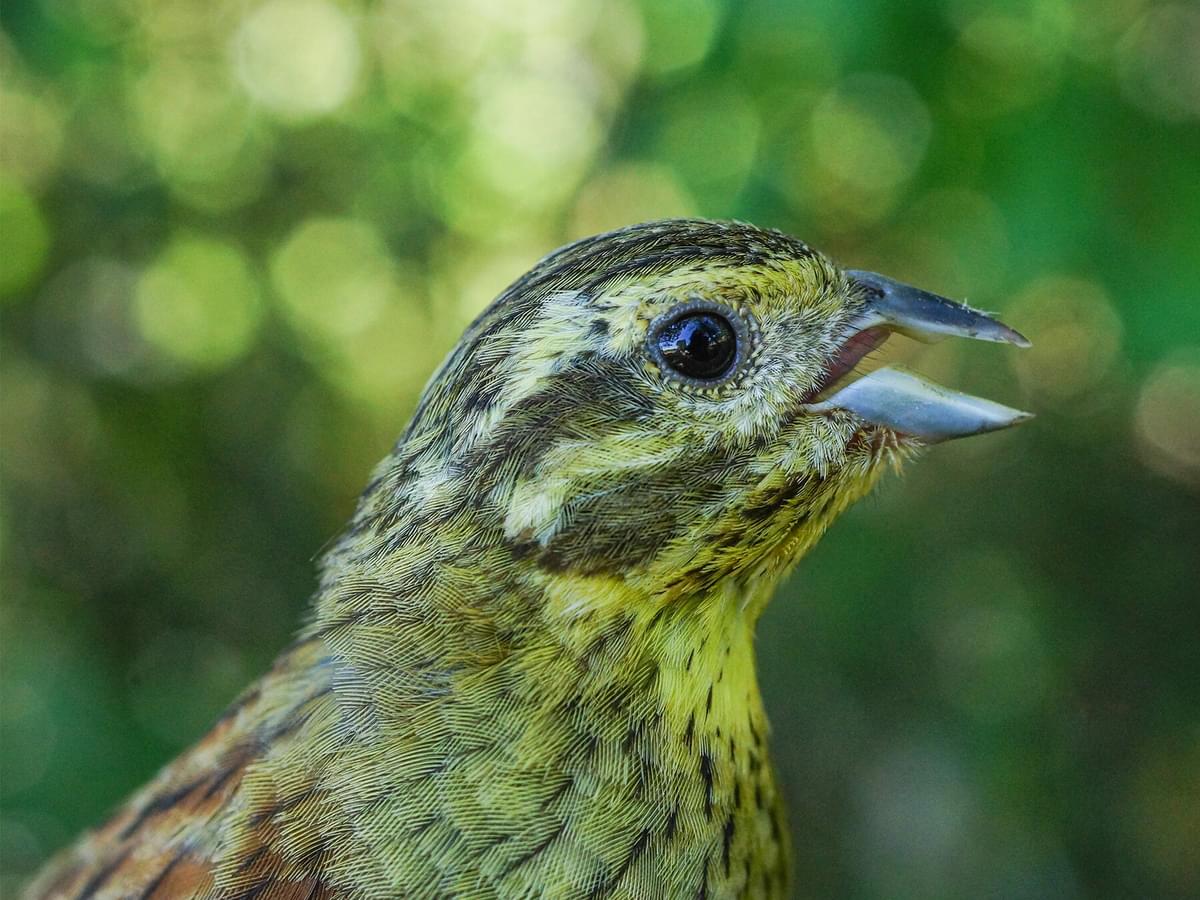
Length
15-16.5cm
Wingspan
22-25cm
Weight
20-25g
Cirl Bunting
The Cirl bunting is related to the Yellowhammer of the same family. These small and charming birds were once common across England but are now confined to a relatively small area between Plymouth and Exeter in South Devon.
The UK’s Cirl bunting population was dangerously close to being lost completely, but conservation efforts have helped numbers pick up. Still, they remain on the conservation Red List with just 1,000 or so estimated breeding pairs.
This sweet bird is a favourite amongst the UK’s birdwatching population. Two popular spots for sighting them include the Exminster and Powderham Marshes and Labrador Bay. Breeding pairs have now been recorded in Cornwall.
Appearance
The Cirl bunting measures 15.5cm long with a wingspan of 22 to 25.5cm. They weigh approximately 21 to 27g.
The male is considerably brighter than the female, with a black chin, eye stripe and crow with yellow stripes across their heads and underparts. The female is duller overall and looks similar to a Yellowhammer.
Wood Warbler
Phylloscopus sibilatrix
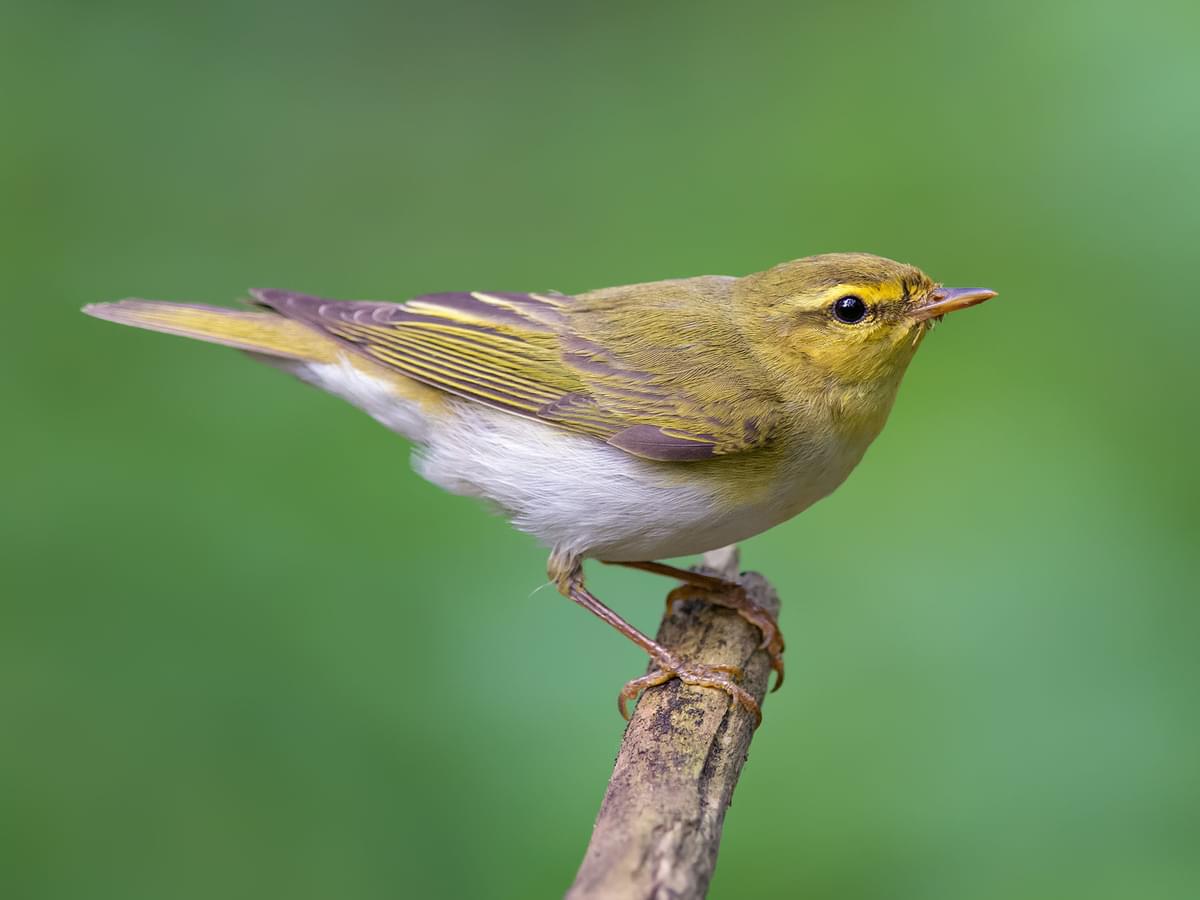
Length
11-12.5cm
Wingspan
20-24cm
Weight
8-15g
Wood Warbler
Another of the UK’s rarer yellow birds, the Wood warbler, is a conservation Red List species with a population of just 6,500 individual males (data on breeding pairs is lacking). The Wood warbler is predominantly a summer visitor to the UK, heading to Africa in winter. Like other warblers, they have a rich and melodic song.
These denizens of deep woodlands are concentrated in various forest pockets across the UK, with the highest concentrations in the oak woodlands of west Wales.
These birds are tough to spot, not just because they’re fairly rare, but because they’re secretive and spend much of their time in the upper parts of the tree canopy.
The Wood warbler shares Red List status with other UK birds whose populations are suffering sustained decline.
Appearance
A compact and attractive bird, the Wood warbler measures just 12 to 13cm long with a wingspan of 19 to 24cm. They weigh around 8 to 12g. Despite being seemingly tiny, they’re one of the larger warblers. Their upper parts, throat, back and chest are predominantly yellow, with a white underside. They have a black stripe behind the eye and black wing tips.
Golden Oriole
Oriolus oriolus
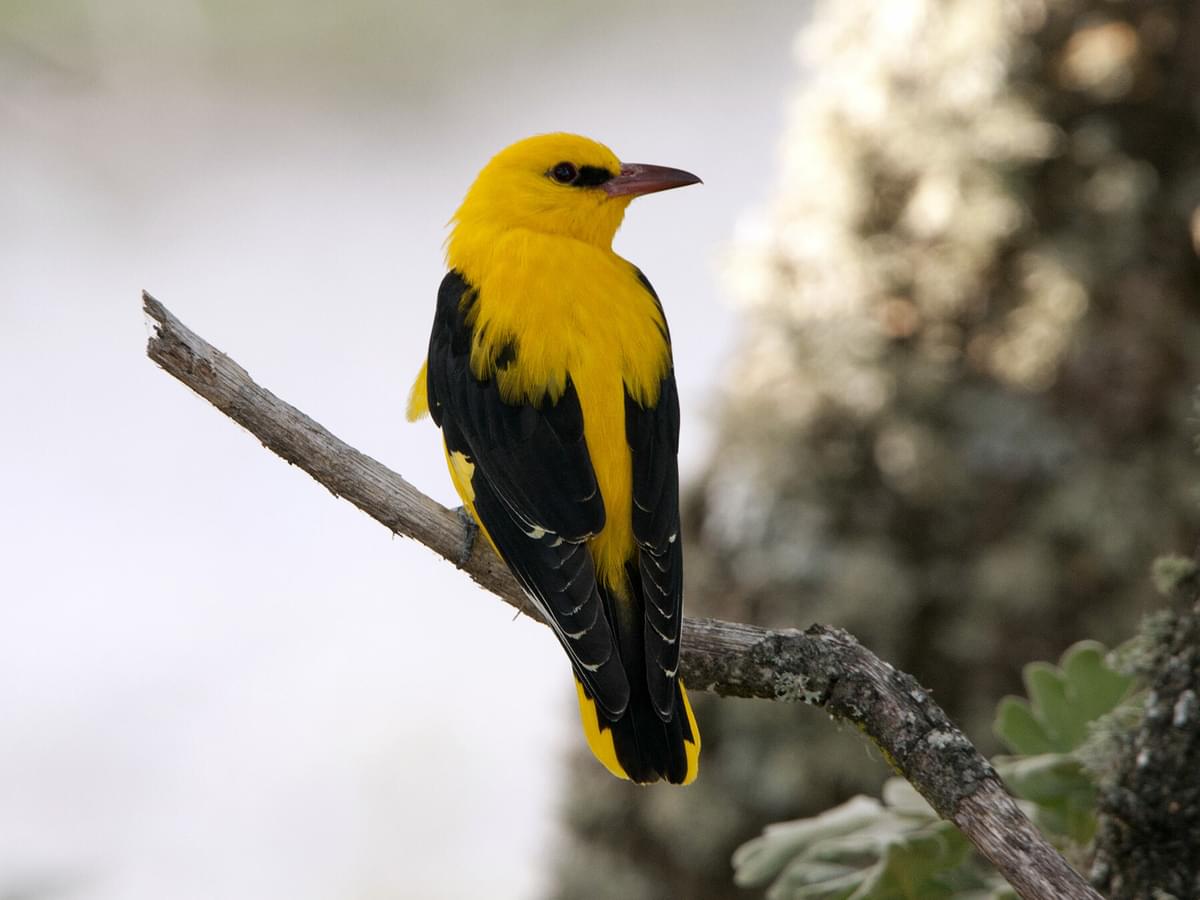
Length
22-24cm
Wingspan
44-47cm
Weight
56-79g
Golden Oriole
The stunning Golden oriole lives up to the namesake courtesy of its deep, yellow-gold plumage. You’d think this bird would be easy to spot, but it’s known for being incredibly secretive and often hides away in the upper canopies of dense woodland.
Moreover, there are just 85 or so Golden orioles in the UK each year, which pass through briefly on their migratory journey from Scandinavia to Africa. Golden orioles once bred in the UK but are becoming endangered across their Western European range.
Most sightings occur on England's south and east coasts, including RSPB's Lakenheath reserve in Suffolk.
If you want to spot a Golden oriole, it’s essential to learn its call and song. The call is a screechy jay-like rasp, but the song is much more melodic with a flute-like roll of smooth notes.
Appearance
The male Golden oriole is extremely deep and vivid yellow, with a black eye stripe, black upper wings, and tail feathers.
The female is comparatively dull, though still predominantly yellow. Orioles belong to the blackbird family, and their sleek thrush-like form is similar to that of a blackbird.
Golden Pheasant
Chrysolophus pictus
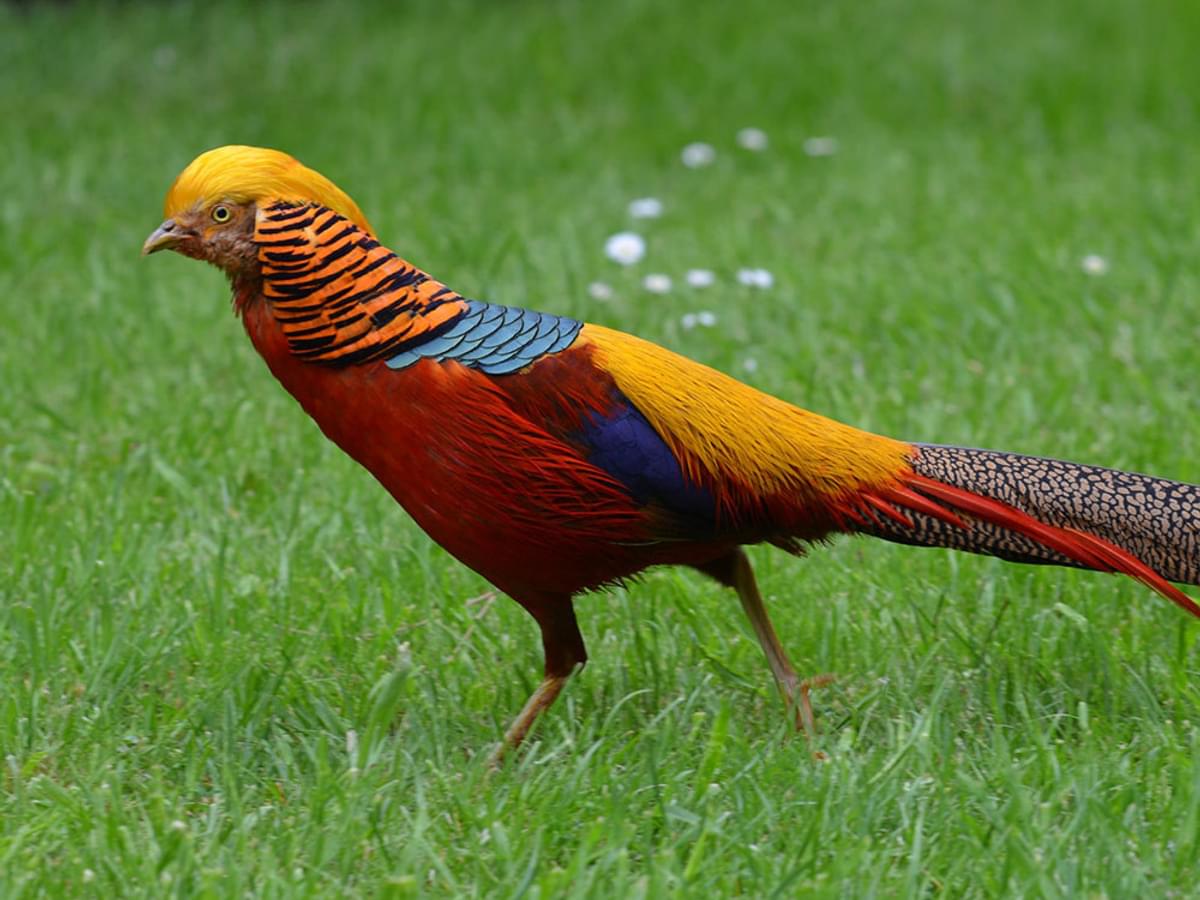
Length
90-105cm
Wingspan
65-75cm
Weight
500-1700g
Golden Pheasant
One of the UK’s most ornate birds, the grandiose Golden pheasant is rare across its former strongholds in Tresco, Scilly, Breckland, Suffolk and Brownsea Island in Dorset. Another population near Sandringham, west Norfolk, is also reportedly dwindling.
The UK population was first introduced in 1845 and supplemented to keep numbers up, though populations have never truly stabilised.
This colourful bird is native to mountainous China but was introduced to a huge range of countries as a gamebird. European populations are tiny, but the bird isn’t considered globally threatened.
You’d be lucky to post a Golden pheasant in the UK these days. There are an estimated 50 to 100 pairs, but this is considered optimistic.
Appearance
Golden pheasants are large, measuring 100 to 115cm long with a wingspan of 65 to 75cm. They weigh around 550 to 710g.
If you’re lucky enough to spot a male Golden pheasant, you will not likely forget the encounter!
These ornate birds are typically pheasant-like with long tails and striking plumage but are adorned in golden-yellow plumage that covers the head and back, with a fire-red breast, yellow neck and golden spotted tail. They also have iridescent blue patches across the sides of their necks.
The females are much more modest with predominantly brown plumage, though it still has a long tail.
Birds with yellow colouration
The following birds are yellow-ish or have yellow colouration to parts of their bodies.
Blue Tit
Cyanistes caeruleus
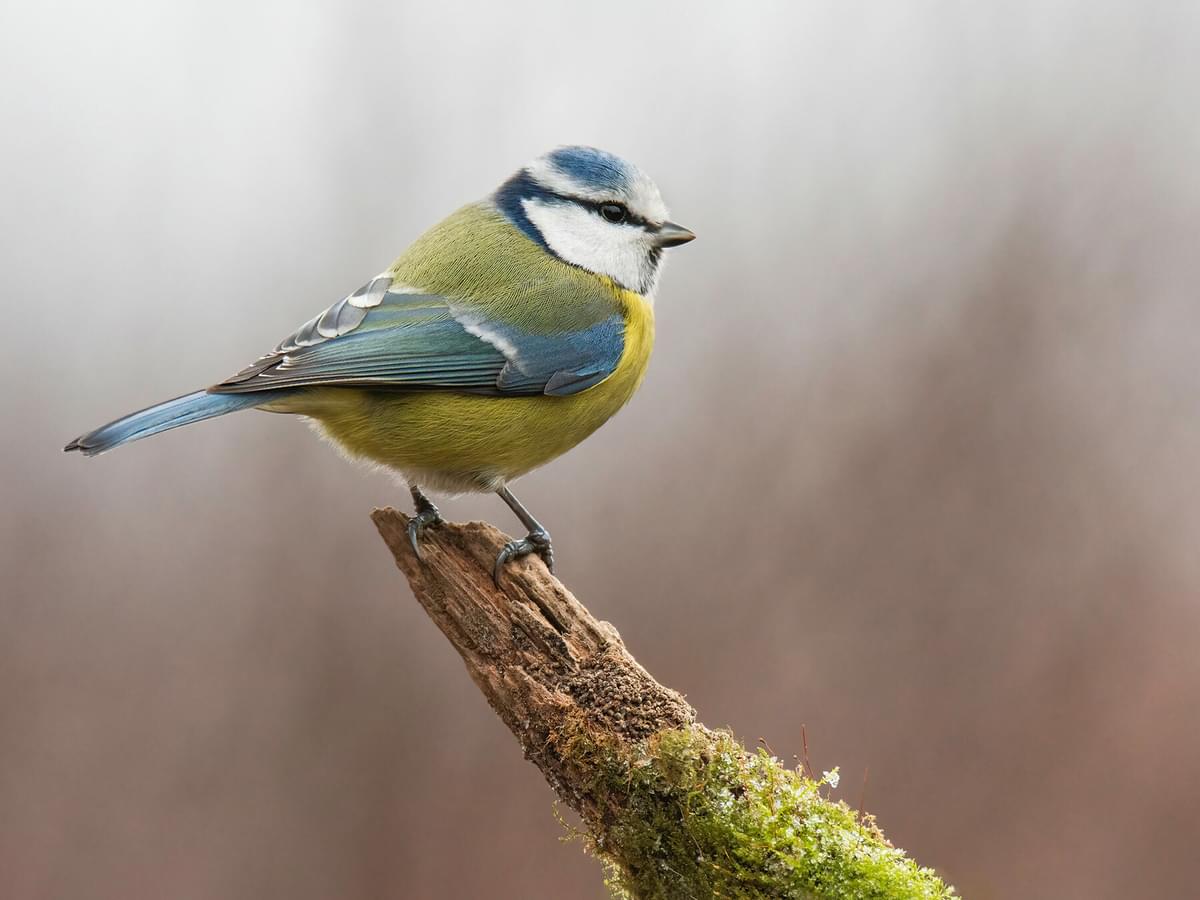
Length
11.5-12cm
Wingspan
18-20cm
Weight
9-12g
Blue Tit
The colourful Blue tit is one of the most common and well-known birds in the UK. There are over 3.5 million resident pairs in the UK, with some 15 million winter visitors. They’re common throughout most of the UK and Ireland, though they are lacking in the Scottish Uplands.
Blue tits frequent garden bird feeders alone or in small groups. They’re generally agreeable birds that aren’t overly aggressive to others.
Appearance
Blue tits are unmistakable, courtesy of their blue and yellow plumage. While they’re not a yellow bird - as they’re decidedly blue - their yellow breast, chest and neck act as an ideal contrast for their blue backs, wings and white faces with a black stripe.
Firecrest
Regulus ignicapilla

Length
9-10cm
Wingspan
13-16cm
Weight
4-7g
Firecrest
The UK’s smallest bird, the Firecrest, has a distinct red and yellow mohawk-like crest. With just 500 pairs or so distributed across east and southern England, the Firecrest is an elusive spot despite its vivid colouration. These small birds don’t have a stronghold as such, and sightings seem to occur at random.
The UK’s tiny breeding population is joined by winter visitors and migrating birds on their way to other parts of Europe. Despite its rarity, the Firecrest is on the conservation Green List.
Appearance
Alongside the Goldcrest, the Firecrest is UK’s smallest bird, measuring a minuscule 9cm long with a wingspan of 13 to 16cm. It weighs just 5 to 7g - less than a £1 coin!
Firecrests are colourful, with a green back, white stomach and black and white eye stripe. Their crest is yellow with a black stripe and bright orange centre for the males.
Goldcrest
Regulus regulus
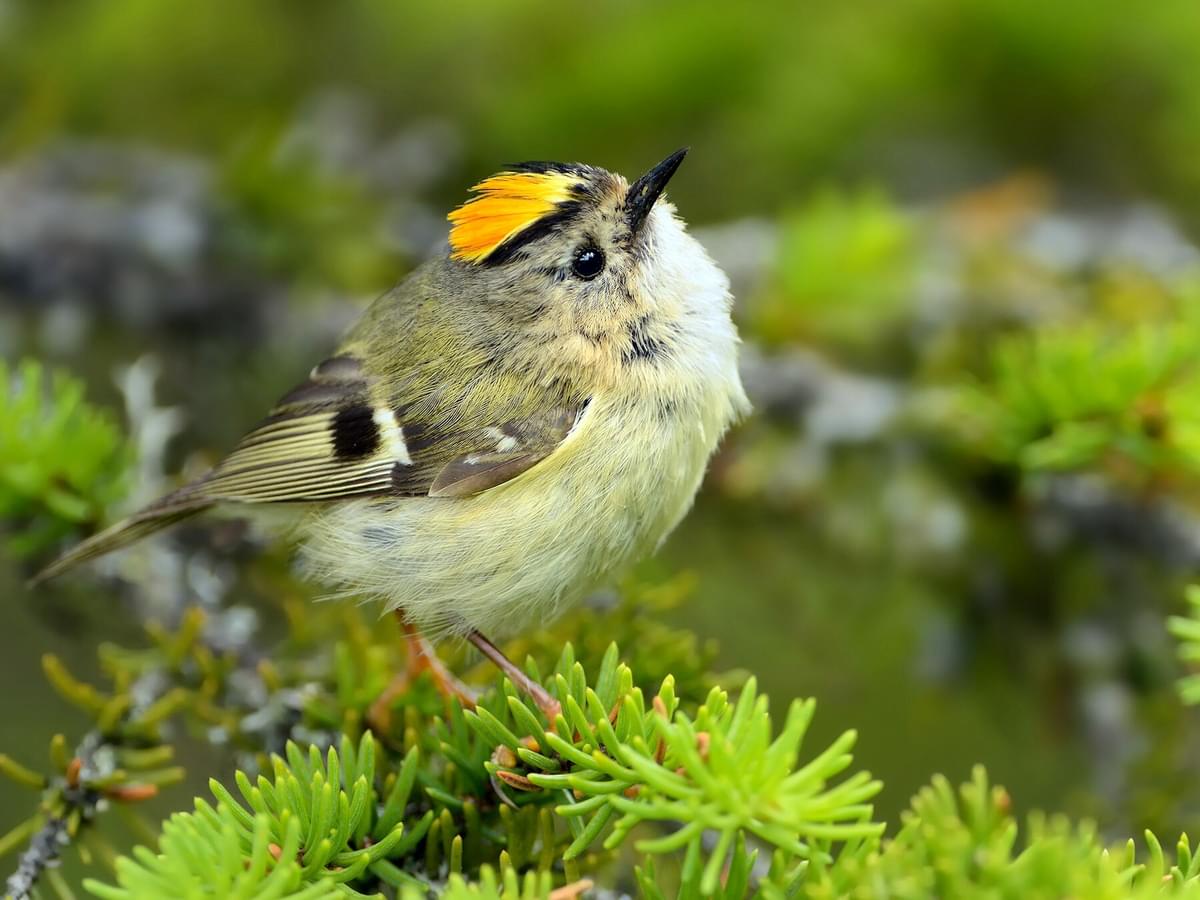
Length
8.5-9.5cm
Wingspan
13-15cm
Weight
4.5-7g
Goldcrest
The Goldcrest is considerably more common than the related Firecrest, with some 610,000 breeding pairs. You’re most likely to see one across the dunes and coastal woodlands of England’s east coast, where many stop on their migratory journeys from Scandinavia.
Appearance
This tiny bird is closely matched with the Firecrest, but they do differ. The Goldcrest’s only yellow component is a yellow stripe across its head. Otherwise, it's mainly green with black and white stripes across some of its body, wings and tail. It’s almost identically sized to the tiny Firecrest.
European Goldfinch
Carduelis carduelis
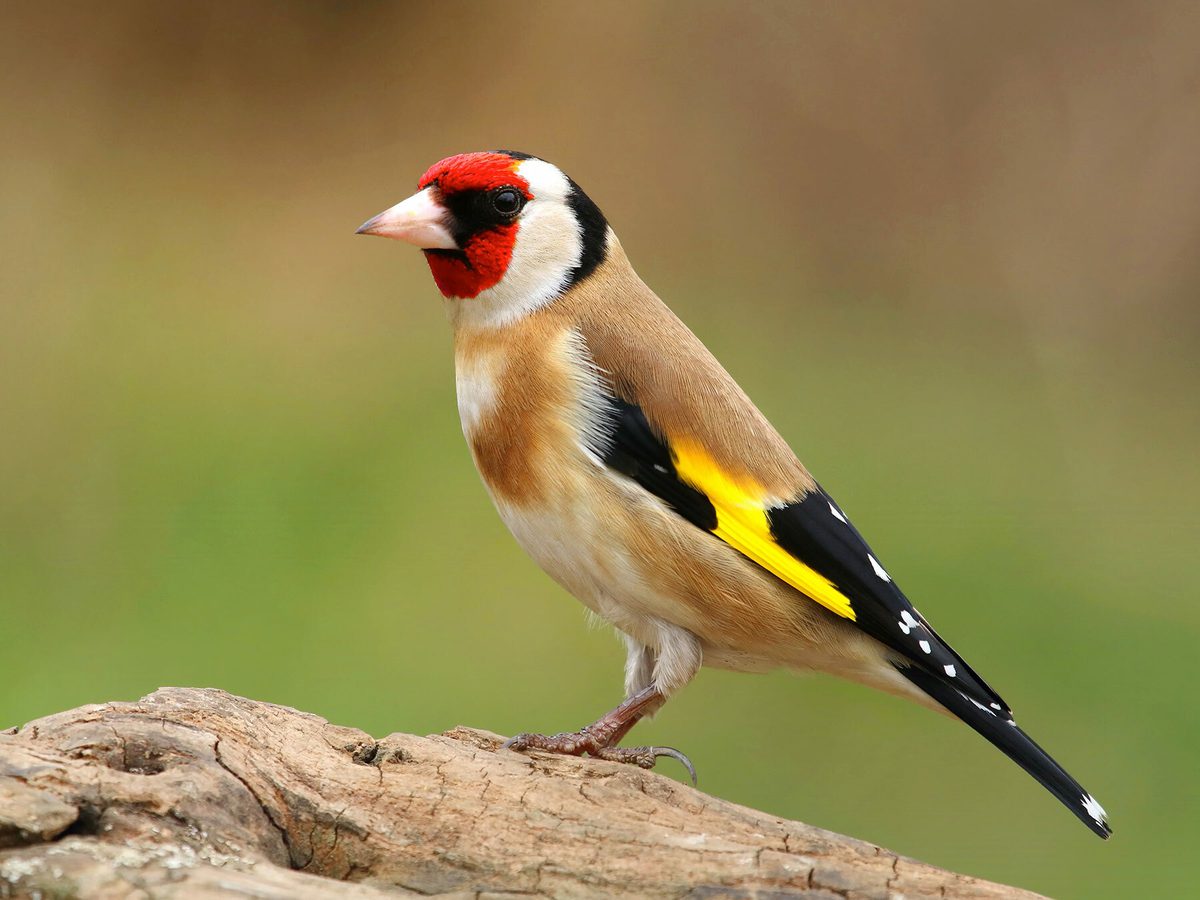
Length
12-13cm
Wingspan
21-25cm
Weight
14-19g
European Goldfinch
The European goldfinch carduelis subspecies is one of the most common small birds in the UK and has a distinctive red face and black and yellow wings.
These bright finches are most common in central and southern England. They’re easily recognisable, social, and are predominantly herbivorous, consuming mostly seeds.
There are around 1.5 to 1.7 million goldfinches in the UK.
Appearance
The compact European goldfinch measures 12 to 13cm long with a wingspan of around 21 to 25cm. They weigh around 14 to 19g. Black and golden yellow striped wings qualify them as a part-yellow bird, which combines with their colourful red face to make a striking bird.
Greenfinch
Chloris chloris

Length
14-16cm
Wingspan
24-28cm
Weight
25-35g
Greenfinch
Marginally less common than the goldfinch, the greenfinch is very common throughout the UK, with some 1 to 1.5 million pairs. Nevertheless, rapid population decline has placed this bird on the conservation Red List.
Appearance
Greenfinches are around 15cm long and have a wingspan of 24.5 to 27.5cm. They weigh approximately 28g. Their only discernibly yellow component is the yellow flash across their wings. Other than that, they’re predominantly light green.
What is the most common yellow bird in the UK?
The most common yellow bird in the UK is the Great Tit, followed by the Yellowhammer and then by the Siskin.
What is the largest yellow bird in the UK?
The largest yellow bird in the UK is the Golden Pheasant, although they're extremely rare. Another rare bird in second place in terms of size is the Golden Oriole, which is a similar sort of size to a Blackbird.
What is the smallest yellow bird in the UK?
The smallest yellow bird in the UK is the Firecrest, although only a small part of their plumage is yellow.
